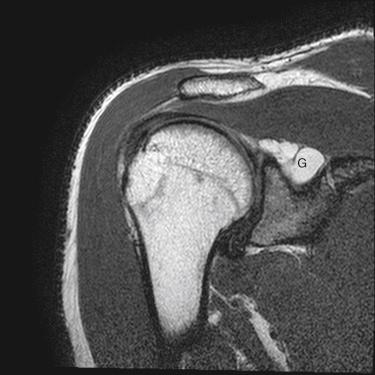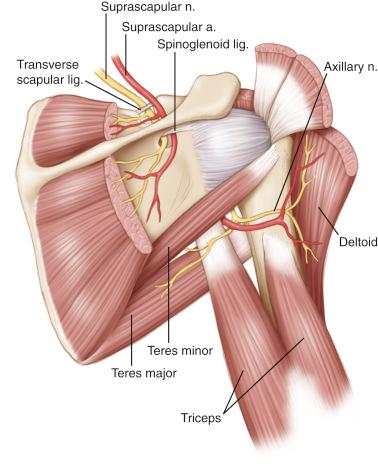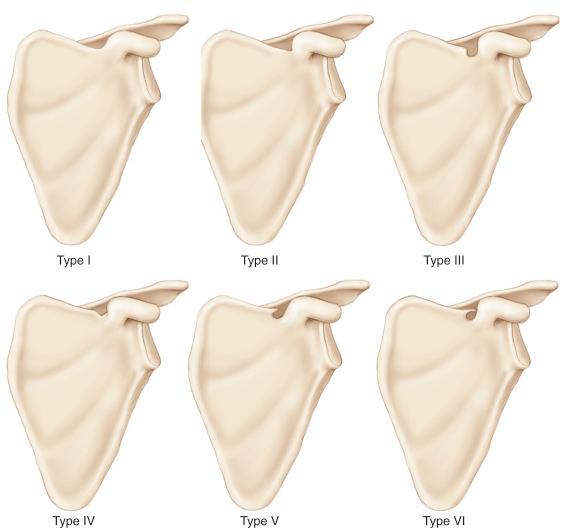Physical Address
304 North Cardinal St.
Dorchester Center, MA 02124
Ganglion cysts around the shoulder joint can cause shoulder pain, and the symptoms are usually similar to those associated with common shoulder diseases. Since only 1% to 2% of all patients with shoulder pain have neuropathy of the suprascapular nerve, suprascapular nerve compression is not a disease primarily suspected in shoulder patients. Surgical treatment should be considered if patients have persistent pain in spite of appropriate conservative management.
Arthroscopic cyst decompression is performed through a glenohumeral or subacromial approach. Each approach has its own pearls and pitfalls. Appropriate treatment for accompanying capsular or labral lesion is also required to prevent postoperative relapse.
Patients tend to have a history of shoulder trauma or repetitive use of the shoulder.
Many patients complain of vague, dull, poorly localized shoulder pain that is worsened by overhead activity, including volleyball, baseball, tennis, and swimming.
The pain frequently presents as a radiating pattern from the neck to the upper arm, frequently over the lateral and posterior aspects of the shoulder.
Clinical findings are usually nonspecific in the early stage of disease.
In the later stage, they appear variously depending on the location of the nerve compression, suprascapular notch, or spinoglenoid notch.
If nerve compression occurs at the spinoglenoid notch, only the infraspinatus muscle becomes denervated, whereas if compression occurs at the suprascapular notch, both the supraspinatus and infraspinatus muscles become denervated, and the symptoms are determined by the denervation pattern.
Palpation and visual inspection of the posterior rotator cuff are necessary to detect muscle atrophy.
Infraspinatus muscle atrophy is easily found by comparison with the contralateral healthy shoulder, whereas the supraspinatus muscle needs to be carefully examined because it is covered by the trapezius muscle superiorly.
Patients may present with abduction and external rotation weakness depending on the degree and the duration of nerve compression.
There are various imaging tools available for diagnosis, and plain radiographs are the first choice to help identify any bony lesions. The radiographs should be checked for bony erosions potentially caused by ganglion cysts.
MRI (magnetic resonance imaging) is a highly useful modality for definitive diagnosis. In general, ganglion cysts show a low signal in the T1-weighted image and a high signal in the T2-weighted image, have a definite and smooth outer margin, and often present as multi-lobulated cysts ( Fig. 52.1 ).

The MR images should be analyzed for the presence of an accompanying labral lesion, for which MR arthrography (MRA) is known to be the most sensitive test.
As the initial treatment, ganglion cysts of the shoulder should be approached conservatively. Patients are instructed to avoid excessive overhead activity. For physical therapy, scapular stabilizer strengthening exercises in addition to stretching exercises are recommended. The cyst may become enlarged even with appropriate conservative treatment, therefore close follow-up is essential.
Computed tomography– or ultrasound-guided aspiration have been applied as the second step of conservative treatment. However, they may produce inconsistent results. There are often cases of failed aspiration, and it was reported that 48%–75% of patients had a relapsed cyst during follow-up, even when the aspiration was performed well. Since it is ultimately impossible for aspiration to treat a cyst-accompanied labral lesion, it has the disadvantage of a high relapse rate.
Cyst decompression through an open posterior approach has been widely used for conventional surgical treatment. The advantages of open surgery are that the cyst can be directly observed during removal and also enables direct decompression of the suprascapular nerve. However, it also has disadvantages, such as morbidity resulting from the incision and dissection of the surrounding soft tissue and muscles and difficulty in treating labral lesions.
The advantages of the arthroscopic technique over the open technique are that it has less postsurgical morbidity and can also treat accompanying intraarticular lesions. However, it may be difficult to remove cysts completely by arthroscopy alone. Because ganglion cysts frequently show multi-lobulation, it may not be easy to examine the entire cyst directly during arthroscopy.
The suprascapular nerve exits the posterior triangle of the neck, travels inferiorly to the trapezius muscle, passes the suprascapular notch, and enters the supraspinatus fossa posteriorly. It passes inferiorly to the transverse scapular ligament that covers the suprascapular notch, and the suprascapular artery and vein pass superiorly to the ligament. ( Fig. 52.2 )

The shape of the suprascapular notch is different for each individual, and those individual differences determine the size of the space through which the nerve can pass and cause entrapment syndrome. Rengachary et al. classified the suprascapular notch anatomy into six types, depending on the shape of the notch and the ossification of the transverse suprascapular ligament ( Fig. 52.3 ).

Thereafter it runs along the lateral border of the scapular spine, crosses over the spinoglenoid notch, and enters the infraspinatus fossa. While traversing the spinoglenoid notch, it passes under the inferior transverse scapular ligament, which is also a location where nerve entrapment could occur. According to previous anatomic studies, an inferior transverse scapular ligament exists in about 50%–80% of shoulders. Since this ligament limits movement of the nerve in the spinoglenoid notch, even a small cyst can easily induce compression ( Fig. 52.4 ).
![FIG. 52.4, Schematic drawing of a spinoglenoid notch cyst in proximity to the suprascapular nerve. [no source noted] FIG. 52.4, Schematic drawing of a spinoglenoid notch cyst in proximity to the suprascapular nerve. [no source noted]](https://storage.googleapis.com/dl.dentistrykey.com/clinical/ArthroscopicManagementofSpinoglenoidandSuprascapularNotchCysts/3_3s20B9780323287845000522.jpg)
If patients complain of continuous pain in spite of more than 6 months of conservative treatment.
If signs of neuropathy appear during follow-up.
If patients have muscle atrophy at initial examination, immediate surgical treatment can be considered.
Although the ganglion cyst is asymptomatic, large cysts that erode adjacent bone should be removed surgically.
Become a Clinical Tree membership for Full access and enjoy Unlimited articles
If you are a member. Log in here